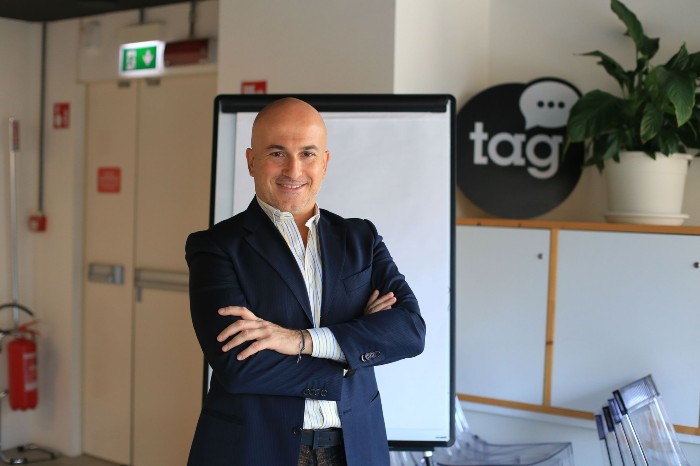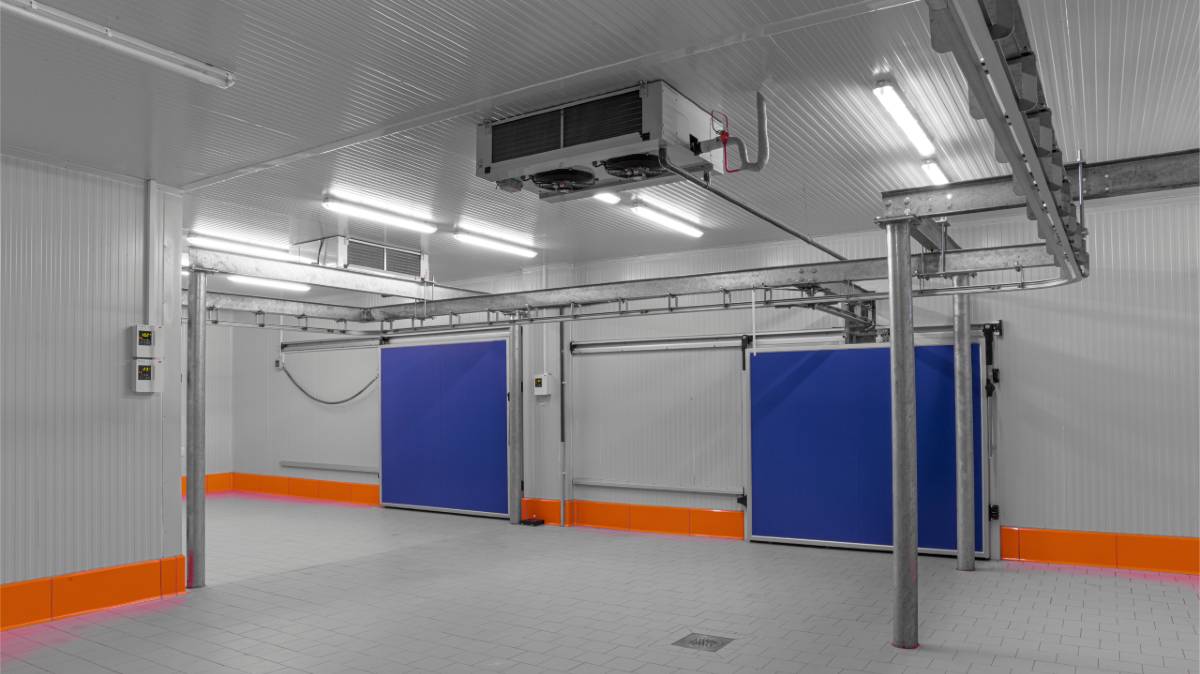Let's see below the reading made by an expert in the subject about the present and future of this market in Latin America.
by ACR Latin America
Energy saving and reducing greenhouse gas emissions are two of the most indispensable requirements that insulated panel systems for cold rooms must offer today.
This niche is growing and of vital importance for the correct performance of food storage spaces and warehouses process plants. For these reasons we consider it important to know, from the point of view of an expert in the field, the current state of this industry in Latin America, as well as its main advances, recommendations in installation, maintenance and monitoring and application of regulations.
Alberto Adriano, Sales Director of Globe Panels, is our guest in this special article, who since 2006 is immersed in this industry and who knows in detail the technologies of thermal insulation panels and their application in Latin America. Here is the interview.
ACR: From your point of view, how is the thermal insulation market for air conditioning and refrigeration currently in Latin America?
Alberto Adriano: The thermal insulation market in Latin America is having a strong interest from investors of all kinds. In the end, thermal insulation means energy and maintenance savings, which translates into significant long-term financial savings. For example, we have seen that in recent years the average thickness of the insulated panel for cold room has increased, because that benefits the refrigeration equipment that will need less maintenance.
As for air conditioning we have seen the continuous increase of pre-insulated sheet in PIR throughout Latin America, including in countries such as Mexico where its use was very limited until recently. Clearly the increase in the price of galvanized sheet has contributed significantly, but I am convinced that the trend will continue, even if there is a correction in prices in the future. There is a constant search for products that improve energy efficiency, and the pre-insulated sheet satisfies these requirements, as a product and as an alternative system to the traditional galvanized sheet ducts. I am fully convinced that we will soon find these products on the US market.

It is essential to think of thermal insulation as the invisible hand of Adam Smith, that is, as a product that fulfills a double function: the first, explicit, is to reduce energy expenditure, while the second, which is hidden, is to reduce greenhouse gas emissions, which derive from energy sources that are not renewable, and the prevention of food waste at the source, which accounts for 30% of total annual CO2 emissions.
If we consider that Latin America is one of the great producers and exporters of fruits and vegetables, and that these foods are in strong demand by countries around the world, I see a path of assured growth. Another issue is the availability of thermal insulation products in Latin American countries, which suffer from bottlenecks that sometimes create product shortages.
ACR: What technological evolution has this sector had in recent years?
Alberto: The main thermal insulation products have been known in materials science for several decades: technological evolution has concentrated on making the production process more efficient and gradually adapting thermal insulation in the installation process.
Below two examples can clarify what I want to say: In relation to the AC I think that the continuous improvement of PIR foams to achieve a better fire behavior today is a real fact and very good news for the market. The issue of fire, together with the issue of energy efficiency, are the two most relevant topics at the moment and it is normal that companies are investing their R&D resources in this regard.
In this direction I feel able to recommend, considering the sensitive issue, that in the phase of choosing the installation product, the certifications and credentials of the regulatory regulators of the products be carefully evaluated.
As for industrial refrigeration, the most emblematic case is the evolution of the joint between panels, this being the weak point of each refrigeration installation. Nowadays they are available together that greatly increase the tightness of a cold chamber, and thus allow to build self-supported vertical warehouses of low temperature that are fully automatic, reaching heights that were absolutely unattainable with traditional joints.
ACR: On the subject of installation, do you think that in our region the regulations are complied with or is there still a lack of training for it (what are the regulations to follow)?
Alberto: The issue of complying with regulations presupposes uncertainty and confusion about which regulations to comply with. This is probably due to the lack of an autochthonous regulation, which can take into account the peculiarities of Latin American countries, in terms of temperature, humidity and risk to fire, to translate them into a regulation that is clear and univocal, easy to understand and to act in this regard.
ACR: What aspects should be taken into account for the installation of insulated panels in cold rooms?
Alberto: There are several aspects that must be taken into consideration when choosing insulated panels for a cold room, but the most important are two:
1. The type of insulation: the materials that best insulate thermally, that is, that guarantee maximum insulation with the least thickness are polyurethanes, of which it is important to know the kind of behavior in case of fire. Among polyurethanes, those that ensure better fire behavior are insulated panels with a core in PIR (Polysocianurato); in any case, it is essential to mention that the only type of insulating panel that guarantees a higher class fire behavior is that of rock wool, which nevertheless loses a lot of thermal insulation power with respect to the PIR and PUR foam panel (PIR and PUR have a thermal insulation of 40% higher than that of rock wool, but rock wool has superior fire behavior with respect to PIR, and extremely superior with respect to PUR).
2. The thickness of the insulation: choosing the thickness of the insulation means choosing between: saving once and for all in the purchase, by buying a product that isolates less, and gradually saving in the years in which the cold room is operating, due to the effect of a lower energy expenditure and lower maintenance cost of the refrigeration equipment, because the equipment would operate at a less stressful regimen.
ACR: How is the maintenance of the insulated panels and what factors generate poor care of the panels?
Alberto: The maintenance of the insulated panels is simple, but it depends on the type of finish or coating that the steel or aluminum sheet has. The finish is a paint that has, either the function of protecting the metal from aggressive agents or the aesthetic function of giving different colors to the metal. The paint, or coating, can be different depending on where the insulating panel is going to be placed, whether in a coastal or internal area, if in a very tropical or Nordic region, if it is for use in an aggressive or normal environment. There are very resistant paints and others less.
It is important to know what type of paint or coating the panel has to know how to clean it from the dirt that accumulates, because dirt can cause oxidation and that reduces the useful life of the insulating panel. Normally, the surface is washed with a damp cloth and common detergent, in low concentration. If a pressure cleaner is used, the water should be warm and the pressure low.
For roof panels, maintenance should be annual or semi-annual and should include the removal of dry leaves or anything deposited on the roof. In case of roof coverings with solar panels, it is important to remove any element that is placed between the solar panel and the roof in sandwich panel, to minimize the risk of fire on the roof.
ACR: What is the future of insulated panels for cold rooms?
Alberto: The future of insulated panels for cold rooms is very interesting, because the demand is connected to the development of the cold chain, and that means, that the change of custom in our food towards fresh products has triggered the demand for process plants and refrigerated warehouses around the world, from the origin, among which Latin America plays a fundamental role, up to distribution.
If we take into account that each cold room installed reduces the impact of water and food waste and reduces the CO2 emitted into the atmosphere, then it is likely that the future of insulated panels for cold rooms will be even greater, as soon as public opinion realizes its importance for the well-being of all.
ACR: How did Covid commercially impact this business?
Alberto: The arrival of the Covid pandemic has caused a shortage of product in all world markets, accompanied by a monthly price increase, both of the product and of maritime transport, causing increases of up to 150% in the price of thermal insulation and waiting times that can reach 6 months.
ACR: How does the use of insulated panels benefit to reduce the impact of covid?
Alberto: The most important aspect of how the use of insulated panels has contributed to reducing the impact of Covid is in the construction of refrigerated warehouses that have reduced food waste that was directed to the HORECA channel, while that was closed, to be able to direct them to the large food distribution.















